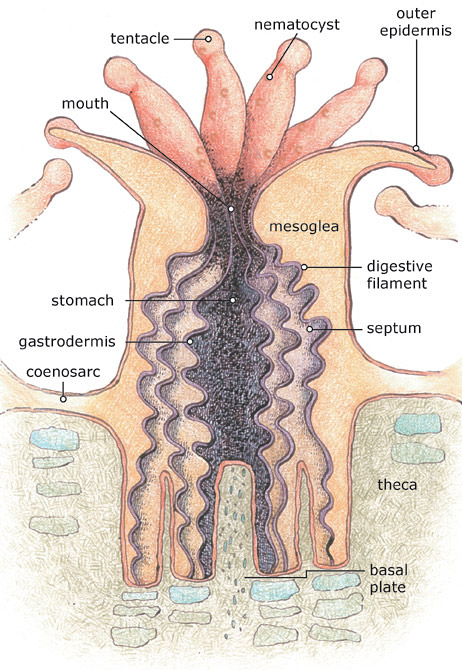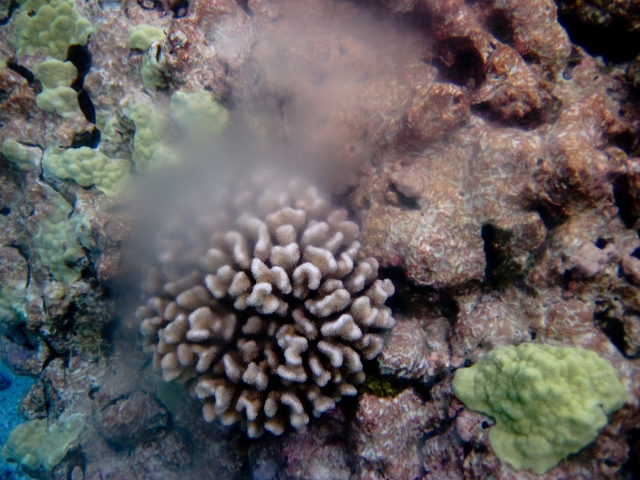
“Coral Polyp” by Wikimedia Commons under CC by 2.0
How do Corals Survive?
Sunlight: Corals grow in shallow water where the sunlight can reach them. The algae that live inside of them, zooxanthellae, need sunlight to survive, since the coral animal depends on the zooxanthellae, corals need sunlight to survive.
Clear Water: Clear water is needed for corals to survive because it lets the sunlight in. When the water is opaque the corals will not thrive.
Warm Water Temperature: Most corals, though not all, require warm waters to grow and survive. Corals general live in water temperature of 68-90°F
Clean Water: Corals are very sensitive to pollution and sediments that can be in the sea. Sediments can create cloudy water conditions which won’t allow for sunlight to get through which will harm the polyps. Corals do not typically do well in environments where there is little sunlight, except for the deep-sea corals. Another issue that may arise is the addition of too many nutrients. An overflow of nutrients in the water can cause things such as algae to grow, in turn taking over the reef. Sediments and pollutants can also cause direct harm to coral tissue.
Salt Water: Corals require a certain balance between the concentration of salts and water (salinity).
Nutrients: Though zooxanthellae do provide some nutrients, the coral animals still need to receive other sources of nutrition. Corals can also grab passing nutrients (like zooplankton) by using their tentacles to snag passing organisms flowing by.
Coral Reef Functions:
Protection: Functions as a form of protection for the shores from harsh waves and storms
Habitat: Provides shelter and safety for many organisms
Nutrients: Many forms of heterotrophic marine life are supported from the primary production of the coral zooxanthellae. Carbon and nitrogen-fixing is an important part of the marine food chain. Nutrient cycling within the coral polyps is very efficient and contributes to the high production of reefs.
How do Corals Reproduce?
Some species have distinct male or female polyps while other coral can alternate gender. Many coral reef species only reproduce once or twice a year. For some coral that only have single-gender polyps, certain events (i.e. full moon) trigger the polyps to release massive amounts of sperm or eggs that flood into the seas, where the gametes eventually come together. Most coral species spawn by releasing eggs and sperm into the water; but the period of spawning depends on the type of coral. When an egg and sperm meet, the fertilized egg eventually develops into a larva called planula. Planula can form by two different ways, either fertilized within the body of a polyp or fertilized outside the polyp, externally in the water. Fertilization of an egg within the body of the coral polyp happens when sperm that is released through the mouth of another polyp, is taken in by a polyp with an egg. When the larva is matured enough the mother will spit it out via the mouth. If fertilization is external, corals will eject large amounts of egg and sperm into the water which eventually find each other. The release of larvae or gametes is known as coral spawning. Most species also reproduce asexually, budding new polyps or fragments, that grow either on an older polyp or drift around before landing on a new surface.

“Cauliflower coral spawning, French Frigate Shoals” by USFWS – Pacific Region under CC by 2.0
The information in this chapter is thanks to content contributions from Haley Zanga, Marisa Benjamin, and Haley Fantasia
